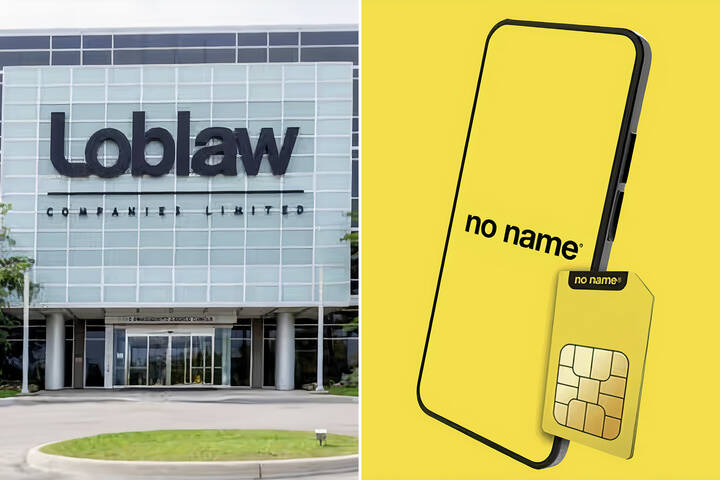
Get to know a Toronto startup: ShelfLife
With the website ShelfLife, CEO James Chillcott and CTO Nick Hoffman are aiming to create a comprehensive catalog of any and all things collectible - think the Transformers action figures from when you were a kid, the Kid Robot stuffed and vinyl toys, video games and consoles from the original Nintendo up to the current generation, replica Star Wars helmets, The Walking Dead comics - they want to have a permanent record of everything that you can collect.
It's kind of like eBay, but more organized and streamlined. It's also sort of like Wikipedia, but it's probably not a great resource for essays. There's also little bit of Etsy in there too - but fewer yarn puppets people make in their basement and more robots in disguise - still in their mint condition packages, of course.
I met up with Chillcott and Hoffman at their temporary offices in the MaRS Discovery District to understand how they plan on connecting passionate collectors across the world.
How did it all get started?
The site got its kick-off as one of six web startups that formed the first cohort of JOLT, a MaRS initiative that serves as a launch pad for startups, but the idea was conceived to address a big pain point that affects passionate collectors. Right now, collectors have to go to a bunch of different sites to find what they're looking for, from open-source message boards run by fan sites, the big video game sites and the smaller sports and action figure collectible sites. The purpose of ShelfLife is to put all those resources under one roof.
How does the site work?
Similar to Wikipedia's editors, all the product data on the site is contributed by voluntary curators, and since launching out of closed beta in the spring, the site has grown exponentially. Though the number of registered users is still in the low thousands, there are now more than 80,000 items cataloged on the site.
Unlike Wikipedia's editors though, curators must apply and are assigned their catalogs, with a deadline of about two weeks to complete it, depending on the amount of items in their assigned catalog.
What sets the site apart from other online market places?
If an item has already been curated, it's really easy to list what you want to sell. It's simply a matter of saying what you own and setting your price; unlike eBay, Craigslist and Kijiji, there's no need to create an entirely new entry for everything you're selling. And for buyers, there will soon be a system where you can put money into the system, set the price you're willing to pay for an item, and walk away.
The site will automatically match you with a buyer -- there's no need to search constantly. You can go to the cottage and come home to find that the system has automatically grabbed what you were looking for.
Having all the items broken down by each individual part gives the system the ability to link up users who are buying and selling the same products, down to a very granular level. For example, if a user wants to buy an Optimus Prime action figure and gun, but don't need any of the other parts, the system will automatically search for a user or users selling any of the individual parts they need and can link them up.
The next step is to implement "collector circles," where the site can analyze your purchases and collections, then make recommendations to connect you with other users who want and have the same types of products.
Why would users make all these catalogs?
Unlike Wikipedia's editors, there is a potential benefit for ShelfLife curators -- and unlike Wikipedia, the site has a functional business model, instead of begging hat-in-hand for donations. The more a user curates, the more they stand to gain: for each item sold out of their catalog, the curator gets 25 per cent of the commission, as well as points that go towards the Collector Wars contest, where users can win site credit or more collectibles.
And the more complete job they do filling out a catalog, the more it will increase that catalog's search engine optimization profile, driving more people (and potential buyers) to the catalog.
Memorabilia vendors can also lean on the site's wants and haves idea to gauge how they should stock their shelves: if a product is announced at the San Diego Comic Con, a curator can set up an entry months before it is released and users can show they want the product, giving vendors an idea of the demand for various collectibles.
What comes next?
Now that the JOLT program is over, it's all about taking the lessons learned in the program, and branching out. That means looking for venture capital money south of the border, while trying to raise awareness about the site through collector blogs, niche magazines and fan site sponsorships, as well as the usual suspects like Facebook and Pinterest.
The site is still in beta, and at about 70 per cent functionality. The next big undertaking will be creating a mobile app that allows collectors to automatically "sight" products -- informing collectors of nearby stores that have what they want. Currently, the whole process is done manually and through message boards, meaning collectors have to rely on the guy who saw the product to get home and post.
With the ShelfLife app, users will be able to scan a barcode and it will automatically inform users who want that product about where it is and how many are available.
Writing by Greg Burchell
Latest Videos
Latest Videos
Join the conversation Load comments







